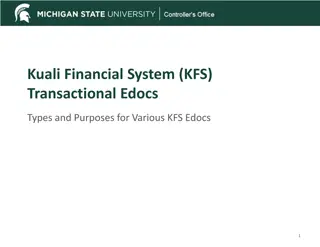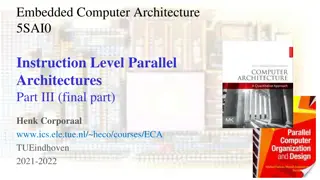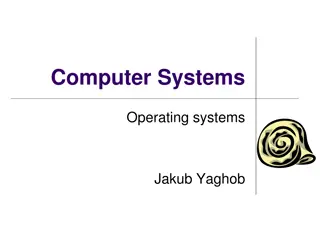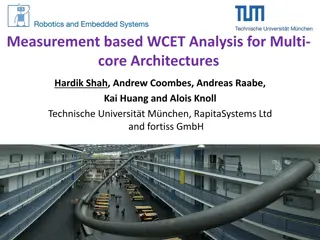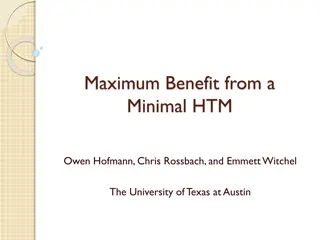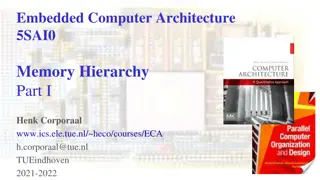Analysis of Transactional Memory Techniques in Multi-Core Architectures
Emerging multi-core architectures have led to the adoption of Transactional Memory (TM) as a new synchronization method. This study delves into the challenges of TM, examining the consequences of transaction aborts, the need for spare aborts, and evaluating measures to enhance transaction processing efficiency. The concept of opacity in TM is explored, along with discussions on commit-abort ratios and contention management strategies. The analysis aims to improve the effectiveness of TM in complex computing environments.
Download Presentation

Please find below an Image/Link to download the presentation.
The content on the website is provided AS IS for your information and personal use only. It may not be sold, licensed, or shared on other websites without obtaining consent from the author.If you encounter any issues during the download, it is possible that the publisher has removed the file from their server.
You are allowed to download the files provided on this website for personal or commercial use, subject to the condition that they are used lawfully. All files are the property of their respective owners.
The content on the website is provided AS IS for your information and personal use only. It may not be sold, licensed, or shared on other websites without obtaining consent from the author.
E N D
Presentation Transcript
IditKeidar and Dmitri Perelman Technion SPAA 2009 1
The emergence of multi-core architectures Conventional locking Transactional Memory is a new synchronization abstraction You may continue by yourself 2 SPAA 2009
Aborting transactions is bad: the work is lost the resources are wasted overall throughput decreases May be even worse: aborted transactions restart and conflict again livelock 3 SPAA 2009
Some times aborts are necessary continuing the run would violate correctness And some times they are not spare aborts the suspicion is unjustified most of the times based on conflict detection Our question: to what degree can we avoid spare aborts? 4 SPAA 2009
Previous measures for evaluating spare aborts and their limitations Our measures for evaluating spare aborts Example TM avoiding spare aborts 5 SPAA 2009
Opacityis widely accepted [Guerraoui and Kapalka 08] Informally: strict serializability, taking into account all the transactions (including the live and aborted ones) 6 SPAA 2009
Previous measures for evaluating spare aborts and their limitations Our measures for evaluating spare aborts Example TM avoiding spare aborts 7 SPAA 2009
Commit-Abort Ratio [Gramoli, Harmanciand Felber]: |committed| / (|committed aborted|) Influenced by the decisions of contention manager We show: every TM is (L) competitive in terms of its C- A ratio (L maximal possible number of live txns) All TMs are bad in terms of C-A ratio, hard to compare Which txn to abort? o1 o1 C A A C o2 o2 T1 T1 A A A o3 o3 T2 T2 A A A 8 SPAA 2009
TM is p-permissive w.r.t. safety property p if it accepts every history that satisfies p [Guerraoui et al 08] Our focus: opacity-permissiveness If the given history does not violate opacity, then the TM should run it without aborts 9 SPAA 2009
We show: there exists no TM providing 0pacity- permissiveness Intuition: there is a degree of freedom given to the read operations cannot predict what value should be read in order to avoid spare aborts in future 10 SPAA 2009
Previous measures for evaluating spare aborts and their limitations Our measures for evaluating spare aborts Example TM avoiding spare aborts 11 SPAA 2009
Strict Online Opacity-Permissiveness: a TM forcefully aborts a txn only when not aborting any txn violates opacity. does not define which txnsshould be aborted allows returning a value that causes abort in the future NP-Complete in the number of committed txns reduction from the view-serializability detection problem [Papadimitriou 79] 12 SPAA 2009
The problem: the order of committed txns is undefined C C C o1 T3 T4 T1 o2 C o3 T2 ? Txns serialization: T4 T1 T2 T3 13 SPAA 2009
Online opacity-permissiveness(intuition): order the committed txnswriting to the same objects this order should be preserved during the run 14 SPAA 2009
Visible reads have their cost: cache invalidations in a multi-core environments Postpone exposing the read if possible We show: if a TM satisfies online opacity- permissiveness the reads must be exposed as they happen must be exposed T3 T3 A o1 o1 T2 o2 o2 T1 T1 T4 T4 15 SPAA 2009
Previous measures for evaluating spare aborts and their limitations Our measures for evaluating spare aborts Example TM avoiding spare aborts 16 SPAA 2009
AbortsAvoideralgorithm as a possibility proof Polynomial time operation complexity Maintains version lists and the precedence graph 17 SPAA 2009
Directed labeled graph over transactions different variations in prior works [Napper and Alvisi 05, Guerraoui and Kapalka08] We show: if a TM maintains PG acyclic and aborts txn only upon cycle creation, then this TM satisfies online opacity- permissiveness WaW writer writer RaW RaW o.vn readers o.vn-1 readers 18 SPAA 2009
Reads are simple: look for the latest version that does not create a cycle in the PG Writes are simpler than Reads: postpone the work till commit (invisible writes) 19 SPAA 2009
Install the new versions of all written objects non-blind writes: after the version that has been read blind writes: plenty of options The greedy approach does not work The places to install are sought in iterations 20 SPAA 2009
Transactions cannot be garbage collected right after the termination should be kept in PG as long as it has a potential to participate in a cycle We define GC conditions from some point onward no new incoming edges will be added to the node Optimizations to save run-time complexity 21 SPAA 2009
Avoiding spare aborts is not always possible Avoiding spare aborts may be costly: no invisible reads for opacity complicated conditions for GC Proof-of-concept algorithm avoiding spare aborts with polynomial time complexity Spare aborts vs. Operations complexity tradeoff is yet to be studied 22 SPAA 2009
23 SPAA 2009
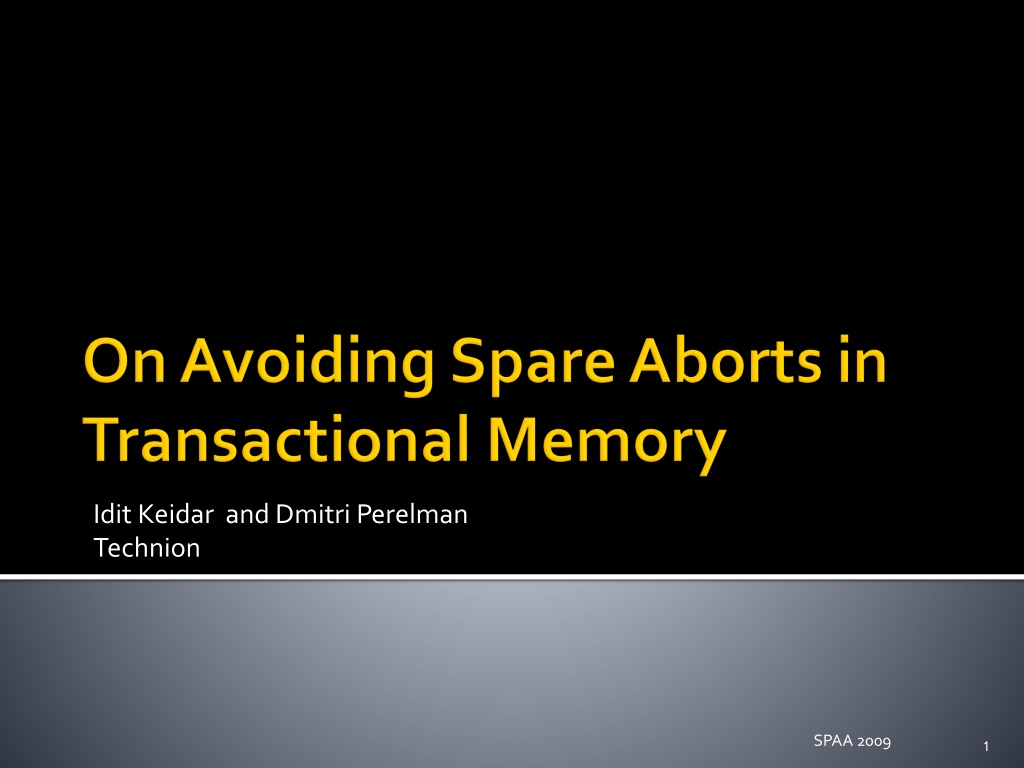
 undefined
undefined



